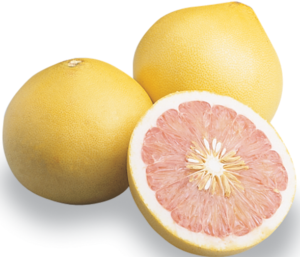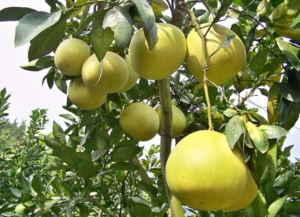B.N. – Citrus grandis syn. Citrus maxima
Family- Rutaceae
Origin – India
Ch. No. – 18
Fruit type- Hesperidium
Edible part – Juicy Placental Hairs.
Pummelo is monoembryonic in nature.
Watch Lecture Video
Climate
- Pummelo is a tropical plant but can grow in both tropical and subtropical climates.
- Pummelo can also tolerate heavy rainfall.
Soil
- Well drained, medium in nutrient availability, medium to light soil.
Varieties

Kae pan – of Thailand
Buntan
Formosa
Propagation
- Propagation commercially by air layering
- Strong rootstocks such as jatti khatti and jambiri are commonly used for pummelo.
Planting
- Pits of size 60-75 cm3 are dug at a distance of 6×6 to 8×8 m.
- Planting is done at the beginning of the monsoon.
Irrigation
- First irrigation is done just after planting.
- It should be done at an interval of 10 days in summer and at an interval of 10-15 days in winter.
- Adequate soil moisture should be maintained during flowering and fruiting stages.
Manure and Fertilizers
- Generally, fertilizers are given thrice in a year i.e. December-January, June-July, and September-October
- FYM is given in June-July or September-October.
- N:P:K – 600 : 400 : 600 g/tree
Training and Pruning
- Young plants are supported so that they can develop fully.

Pummelo - Water sprouts, and weak, crisscrossing branches are cut from time to time.
Harvesting
- North India – January to March,
- South India – September – November.
Yield
- 75-100 fruit/tree
- 20 tons/hectare per year
